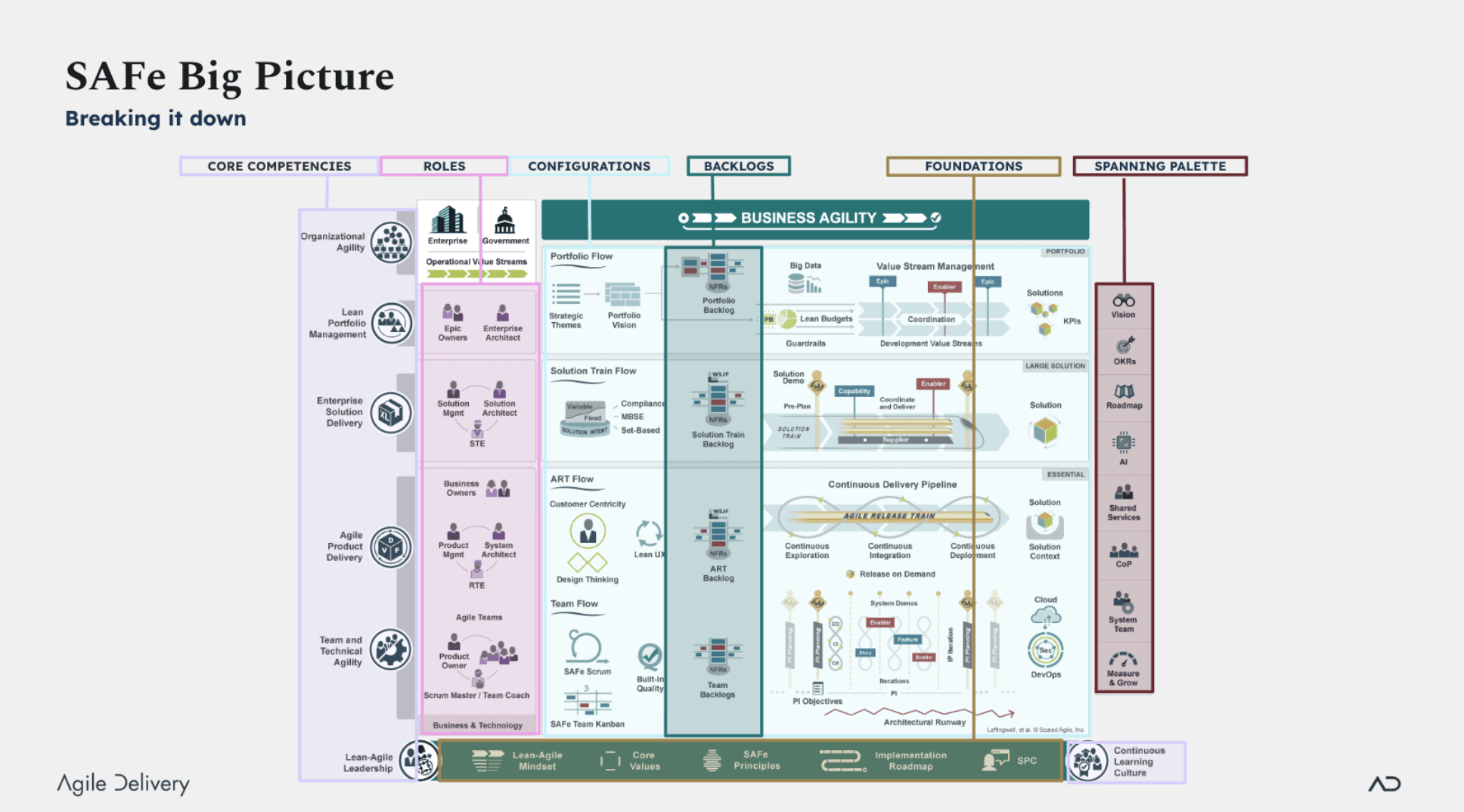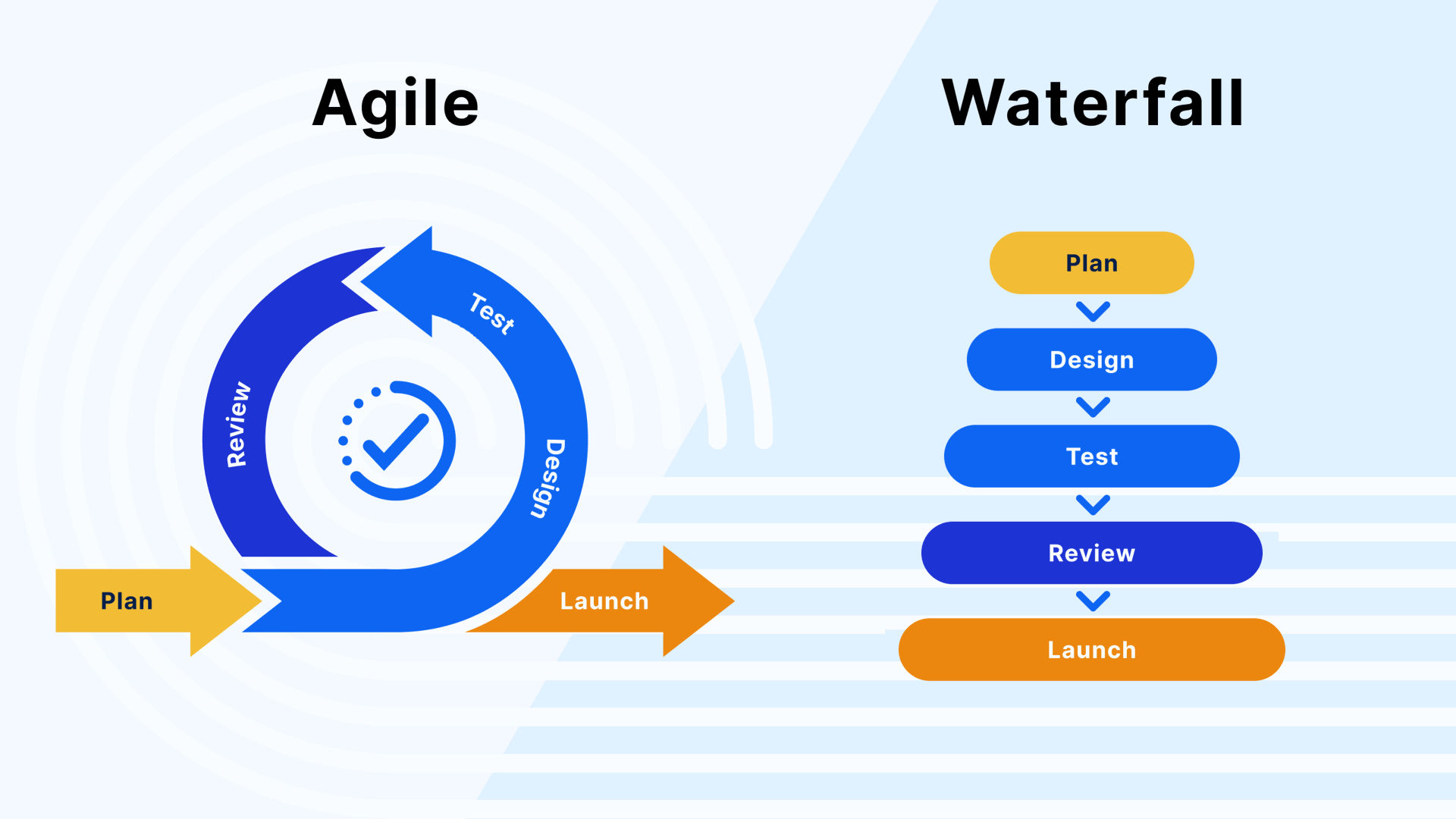PPM
Scaled Agile in Practice: Big Picture, What Works & When to Use It

The SAFe Scaled Agile Framework can be a game-changer or governance overkill, depending on how and where you apply it.
In this knowledge share session, I broke SAFe down into the essential pieces, not from a textbook, but from how it's used in my experience, in practice. Here's the run through of what I covered. And if you want to just catch up with the recording, I've embedded it below so you can take a look yourself.
Recording
SAFe Overview
We began with the basics: What is SAFe, where does it come from and what does it aim to solve. I introduced the SAFe Big Picture, which is an overwhelming visual for those who've not been talked through it.

The SAFe Big Picture - Framework Overview
Core Concepts from the SAFe Big Picture
Core Competencies: The foundational capabilities that support business agility.
Roles: Who does what, and why it matters for alignment.
Configurations: The 3 layers that allow you to dial up or down your use of SAFe depending on the size and complexity of your organisation (Essential, Large, Portfolio).
Backlogs: The various work queues, from team level to portfolio.
Foundations & Spanning Palette: The concepts that connect the dots together.
Lean Thinking in SAFe
Because we only had 30 minutes, once I had outlined the SAFe Big Picture, I decided to focus the time on sharing a few key concepts that I have found useful in my experience. These included:
Lean Portfolio Management
A different way of connecting strategy to execution.
Lean Budgets
When organisations fund value streams rather than projects.
Model Based Systems Engineering (MBSE)
Using structured digital models to visualise complex ideas.
Programme Increment (PI)
Otherwise known as Big Room Planning, which typically takes place every quarter.
DevOps
The set of practices that allow for automated, fast, delivery of value.
“SAFe can be a game-changer or governance overkill – the difference lies in understanding when and how to apply it.”
When SAFe Makes Sense – And When It Doesn't
We then explored real world patterns of success and failure.
| When SAFe Works | When SAFe Doesn't Work |
|---|---|
| 50+ people | <50 Person Start-Up |
| Portfolio level investment | No Leadership Support |
| Executive Sponsorship | Org Prefers Lightweight Agile |
| Appetite for Systemic Change | Culture Resists Standardisation |
| Dedicated Agile Coaches | Poor Tailoring of Framework |
Want to Go Deeper?
If you found this useful, you can dive into my other articles on project management and leadership at scale. You may like:
You can also explore my courses here.
- •SAFe Scaled Agile
- •PRINCE2 Essentials
- •Agile & Scrum Fundamentals
Need a hand scaling your delivery?
Let's connectAuthor



